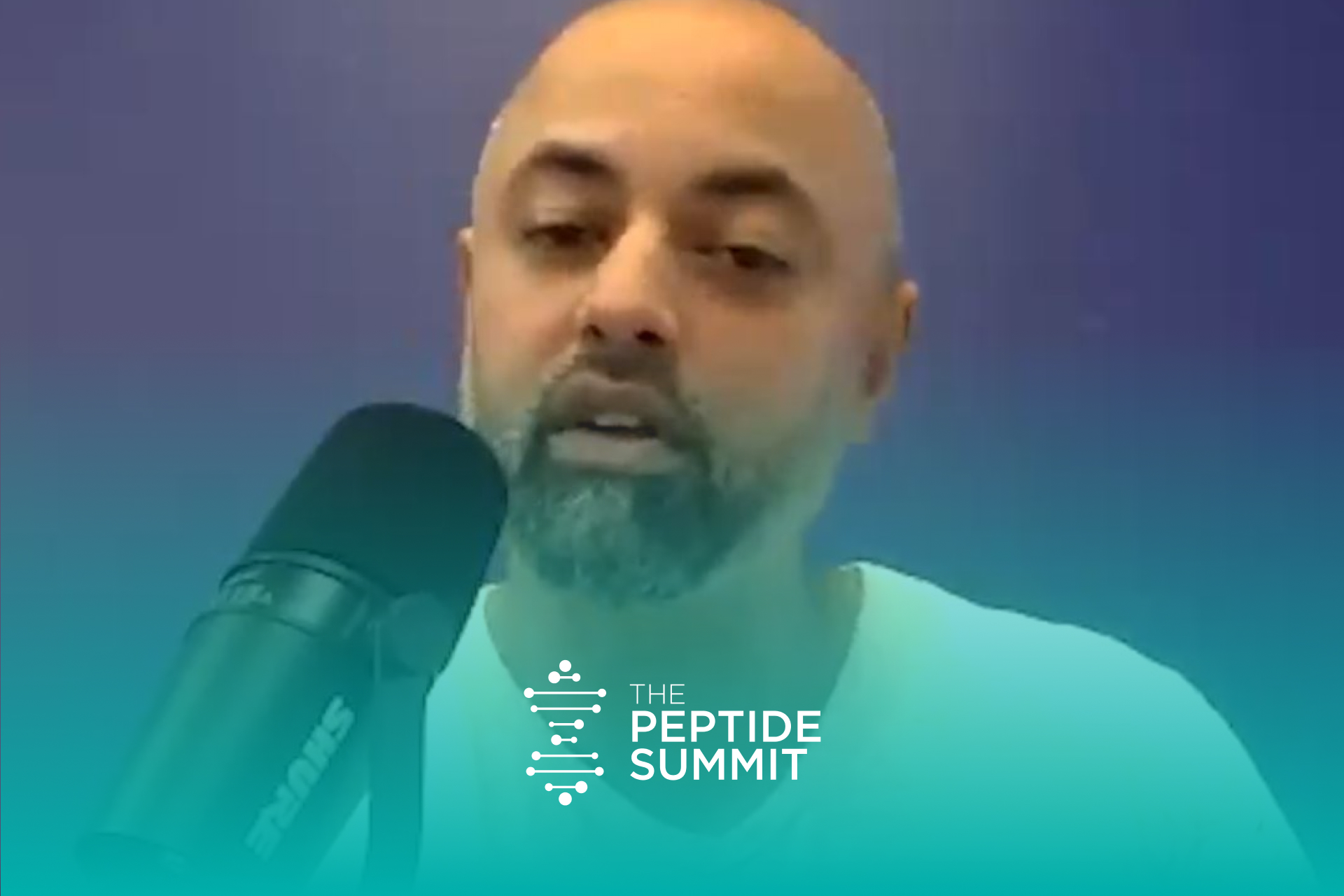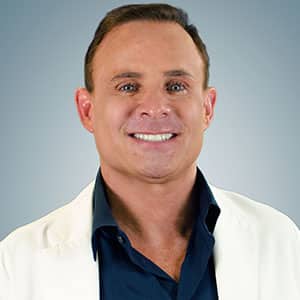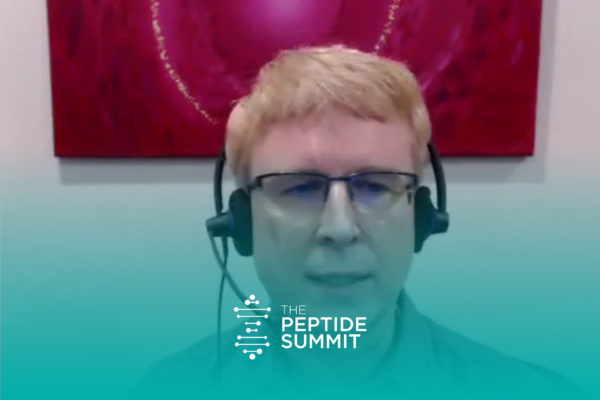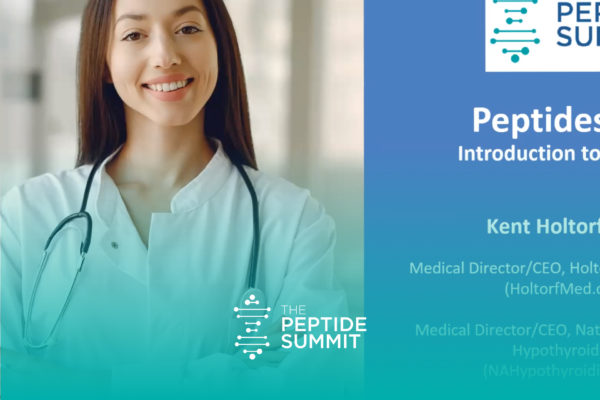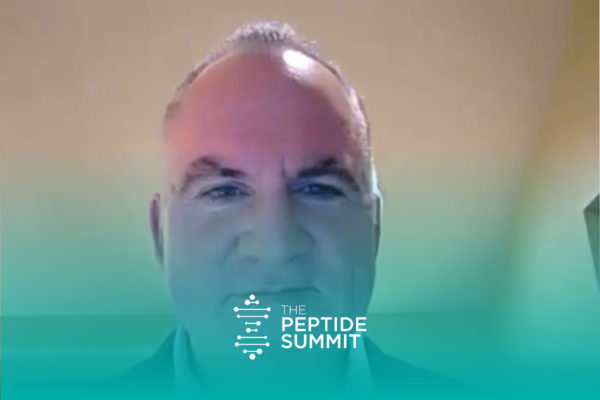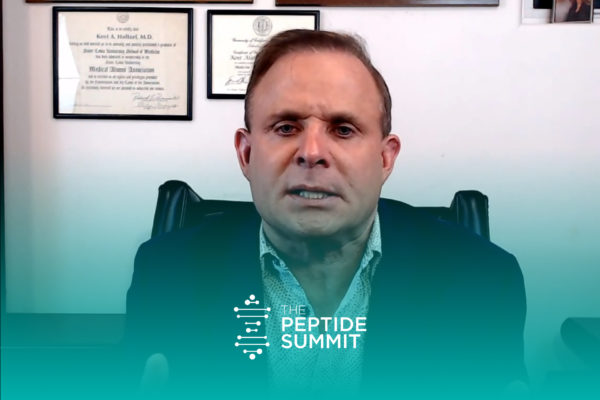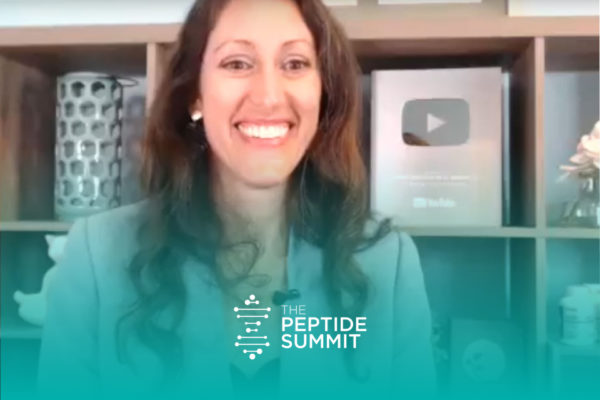Join the discussion below
Kashif Kahn, who is the Executive Officer and Founder of The DNA Company, talks about how to personalize DNA, check the DNA, and see how it affects the system.
He’s assisting in personalized medicine and is the pioneer through unique insights and the human genome. They’ve done the largest study of its kind, globally, very impressive. The DNA Company’s developed a functional approach to genomic interpretation, overlaying environment, nutrition, and lifestyle, on the genetic blueprint to create personalized and deterministic health outcomes. Prior to his tenure at The DNA Company, he’s done quite a few things, pretty amazing. He’s been involved in a number of high-growth startups, where he took an active role as an angel investor and advisor. Read two successful marketing firms, where his client list comprised of Canada’s top earners are the most affluent individuals. From Canada’s largest company to small neighborhood businesses, he’s advised on business strategy and industries, ranging from luxury retail, technology, finance, fine arts, healthcare, tourism, and real estate. He’s participated in over $300 million in revenue, his own retail businesses, prior to launching and consulting services to help others thrive. So he’s grown up in Vancouver. His drive started from witnessing his immigrant parents struggle to establish themselves in a new country. Inspired by an ironclad work ethic and resourcefulness, he developed an industrious entrepreneurial spirit at a young age.
The Computer Algorithm
We spent two years downloading the information from our scientists’ heads. We spent a year building the AI platform, that can then read that information, and produce the reports. And one key factor- so going back to one of the earlier things you said, the genetic industry really is focused on solving genetic problems. Meaning that this gene very directly correlates and equals a problem.
Sickle cell syndrome, some forms of autism, you know, things that you’re born with it, right? You’re not born with type-two diabetes, you’re not born with cholesterolemia, these happened 50 plus because it took that long making the wrong decisions for it to express into a disease. So what does genetics have to say about that? That was the gap, you know, “What are the choices I should make that I don’t end up there?” So the only reason we were able to do that, there are two things, are in our research, we realized there was enough information about genes. What does this gene mean, what does that gene mean, right? We had to layer it into the systems, and mirror the biochemistry of the body. So the first thing that we did, was the mapping. The body isn’t 22,000 independent genes, doing independent things; it’s a cardiovascular system, it’s an endocrine system, you know, it’s a hormonal system.
What’s the cascade for each system? So we looked at how those work, and then we figured out what genes instruct each step along the way. We then met with patients. So we spent two years meeting 6,000 people, one by one, to say, “Okay, this profile leads to an 80% chance of Alzheimer’s, but why did 20% not get it with the same profile? That came down to environment, nutrition, and lifestyle. I have a suboptimal profile for which of the genes are not supporting my ability to fight off Alzheimer’s, but I still have to do something to trigger it.
I’m not born with Alzheimer’s, right?
Reversing the DNA
In studying those environments, nutrition, lifestyle loads, that are put on the genes, and that’s really the most important part. Because now all of a sudden, we understand why these diseases happen, and not only can we prevent them, we can also start to reverse them.
With epigenetically, again, lifestyle, nutrition, lack of whatever, you know, replacing lack of nutrients, wherever it may be. And I think that’s such a problem. We were just getting bombarded with so many toxins. And our food is devoid of nutrients. And so, if you’re genetically prone to get it, you know- or it’s like, my mom would smoke five packs-a-day of cigarettes, and she’d say, “Oh, well, Lois, didn’t get cancer, heart disease,” you know? Well, what’d she died of?
Heart disease and cancer, you know?
One, the easiest thing to identify and reverse is all the cardiovascular disease, because it’s so mistreated, in terms of what’s really happening.
It’s the number one killer. It happens because of all of these reasons we’re talking about, right? It’s more prevalent than ever before, because the toxic environment, nutrition, lifestyle loads, are worse than they’ve ever been. So that’s one that it’s so prevalent, that it just kind of keeps happening. Diabetes, cholesterolemia, et cetera. Then there’s two, where, because our approach is so unique, in areas that are very great, we have really good outcomes.
And I would say the number one is female hormone health. And why, because that’s an area that, first of all, the Delta value between how bad the experience currently is, right? When they go to your typical primary care MD, “Well, it’s your hormones, you’re supposed to have problems,” right? You’re supposed to have menstruation issues, fertility problems, horrible menopause.
The hormonal issue is rooted in estrogen toxicity, which causes that inflammatory load, but guess what? Giving them a birth control pill, the genetics of it, that gene is still instructing to convert all that estrogen into estrogen toxicity, the by-product. So you’re just fueling the fire again, right? So female hormone health, I would say, because, first of all, the current, you know, current sort of experience, isn’t the best. And we’re very precise about it. That’s the one where literally women are crying. They come and they’re crying, like, “I can’t believe I had this many years of pain,” or whatever, and there’s a big flip.
So the hormone cascade is very deterministic when it comes to the genes, but in regular practice, it’s not treated as that deterministic. Like we’re using things like the Dutch test and trying to understand what’s happening today. “Well, guess what? My menstrual cycle looks like this, so tell me today.” It doesn’t mean next week or the week before, right? The circadian rhythm of the menstrual cycle is peaks and valleys.
You need to understand the full cascade. So what we look at is progesterone, converts to testosterone, converts to estrogen, and then you create an estrogen by-product, either 2-, 4-, or 16-hydroxy estrogen. But even in this cascade, you may go from testosterone to DHT, the manly-man toxic version. Or you may clear it as a clean androgen before converting to estrogen. Or any one of these steps, you may do a little slower, a little faster, right? So there are so many variables, and this is why you have things like, you know, Kim Kardashian looks like this, and Kendall Jenner, her sister, looks like this, right? Because they have the same mom, different dad, the genetics are so different that she’s highly estrogen-dominant. So she has the curve, she has the skin, she has the hair. Kendall is highly androgen-dominant, right? The cascade is different, so she looks very different. She’s thin, you know, lean muscle. So now look at those foundations, and you can start to point to the diseases.
Over here, it’s like fibromyalgia, breast cancer, bad menopause. Over here, it’s PCOS, infertility, acne, hair loss, right? And instead of topically dealing with all these things as independent-siloed, they’re all the same thing.
They’re both hormone dominance and hormone toxicity. And we’ve really found that, is if a woman comes in, who’s like, full-figured, versus like, you know, athletic, and you know, that this woman’s going to need more estrogen.
“I hate estrogen. Now, okay, just a little bit, it’s gotta be a balance with the testosterone and their different ratios,” you know? And that’s how they grew up, and they’re physiologically what they need. And I think that’s totally true. Or you get men with, you know, to the gene, they’re converting a lot of testosterone to DHT. You know, they’re bulky, hairy, but bald.
You can do things to block, and we’ll tend to use a combination of nandrolone and testosterone. So testosterone that does not convert to DHT, or estrogen, and then kind of combine it. And, you know, and tone it. A lot of ways to do it, it’s kind of like a, you know, asking five chefs the best way to make a cake, and you get six different answers. But I find that. And I find, too, women love, like, you know, nandrolone, it’s less androgenic.
So now imagine there’s no trial and error, we can actually tell you, upfront, exactly what your cascade is doing, and how many problems that resolve. So then going back to your question, the other area where we feel there’s a major impact, is mood and behavior. So mental health, mood, behavior, and personality. Because again, it’s so great, right? The clinical experience is objective. Like you’re asking questions, you’re trying to gauge how does this person even perceives it, right? Maybe they say it’s 9 out of 10, but it’s actually 4. So all of that, in terms of the neurochemicals, what drives personality, emotion, stress, trauma, so we’ve decoded all of that.
So when we have someone’s genome in our hand, we can literally describe your personality without ever speaking to you. Right, we understand how you deal with it.
And we use this with the executives, for like team formation. We’ve used this in athletics with the teams, also. But just day-to-day, we use it for young teenage girls, that are taking an anxiety pill, that don’t even know why it’s happening, right?
And speaking of antidepressants, I’ll give you myself as an example, right? So that entrepreneurial gene that you talked about at the very beginning, so what is that? Dopamine is your pleasure and reward-seeking chemical, either you enjoyed something or you achieved something, and dopamine is released. You get to feel it, there’s this Eureka moment, right? So the cascade looks like this. You produce dopamine, you have to bind it to experience. Then another gene is called MAO, and there’s a, by the way, a gene called DRD2, which determines how dense your receptors are. So to what degree do you experience that pleasure-reward emotion.
You’ll very rarely see that, because that’s, again, it’s not a genetic condition of genetics, we believe it’s actionable, right? You have to study people to understand the traits. How did they behave? And this is why we studied 6,000 people in person because we literally studied their behavior. How did they behave? And how does that correlate back to the genes, right? So it was and this is why you said, “The largest study of its kind in the world,” that’s what we actually did. So now, for me, dopamine receptors, I have the least possible density. So the weakest version of DRD2, right? There’s a gene called MAO, which is sort of a metabolizer, breaks the dopamine down. I have the fastest MAO.
BRCA gene doesn’t cause breast cancer, it’s a gene-editing gene. What it does is when something else is not working, it goes and fixes it, right? If you have a bad editor, you’re not doing the repairs. So if you have the bad version of the BRCA, there’s more likely that other stuff that’s not going well is gonna continue to not go well. This then leads to that inflammatory load that causes problems with cells, which eventually leads to disease. So then we have to look at, “Well, what’s not going well, why breast cancer,” right? When you look at breast cancer, in terms of demographically, it’s typically menopausal women, for the most part. It’s not 19-year-olds, although you have some, it’s not 8-year-olds, although you have some. It’s mostly in that menopausal bracket, right? So what happens during menopause is you stop having a menstrual cycle. You’re no longer clearing that toxic metabolite. And for the women who are 4-hydroxy, or 6-hydroxy fast, the version of the genes that convert the estrogen into that, just because you stopped having a menstrual cycle, doesn’t mean you stop doing that. The genes are still there that convert any estrogen into that, right? That’s what those genes are doing.
You may also have four detox genes like me, that are not clearing it, right? So now what does the body do with toxic insults when you don’t clear it? It stores it in fatty tissue for women at that age, right? Where do you have fatty tissue? In the hips and the breasts. What do you have in the breast that was never meant to deal with that level of toxic insult? All these glands and everything, you know, what is the breast made of, right? So all of a sudden you get into a “why” root cause, which is actionable. The BRCA gene maybe is not instructing the repair and all the damage that’s being done in it. And so you have a greater chance, but it doesn’t cause breast cancer, it’s the estrogen. The thing that you need to get rid of is estrogen toxicity. It doesn’t matter what version of BRCA you have, right?
The DNA Company
TheDNACompany.com is the website. And we started off direct-to-consumer first because our research was done with sort of high net-worth people, meaning that the technology used to be expensive, right? We weren’t just doing a typical, you know, you see on TV, consumer tests; it’s a much more in-depth process for what we do.
For example, when you buy a typical DNA test, you’re getting what is called “snips”, which are like spelling mistakes in genes. This letter was a C instead of a T, so that’s one test you can run, we do that. But we also test for what’s called an indel, an insertion or deletion, meaning it’s- a whole paragraph is wrong, right, so that it here’s a dirty secret of the industry, let’s get dirty. The secret is this, that, you know, there’s all this concern over data privacy, and, you know, my data, my DNA, et cetera, right?
So that everyone knew that we had this jewel in us, our DNA, this thing that we needed to decode, and it was gonna fix everything, right? So what happened was genetic testing companies got funded in a big way, and they started selling these tests. Well, then later happened, as an investor said, “This business kind of sucks because we test your DNA once, and then what, ’cause your DNA doesn’t change.” It’s not like cholesterol or blood work, where you have a clinic partner, and it just keeps going and going and going. Test once, done, your DNA test never changes, right?
So the new business model became, “Sell the data,” right? And how do you sell the data?
You have to get mass evidence-based style, you know, let’s get big numbers, data, which is study as many genes as we can, find all the snips. So it’s like average-based, pass them off. There’s more you can test for than snips, and that was the problem, where you have genetic reports from this model, which tell you, you got an 80% chance of this, 60% chance of that. You’re taking your instruction manual, that’s definitive, and giving back probability, right? You’re taking my cellular, or like my accelerator code, and telling me, “You got an 80% chance of something.” Well, it’s the 100% answer is actually here, right? So that’s where we got to. And that’s why clinicians started to say, “Well, DNA is not really that actionable,” because the product wasn’t designed for you, or the consumer, it was designed for the data buyer, right? As an example, 23andMe’s big funding, around two years ago, $300 billion, was Glaxo, right? That’s who their big funder was, $300 million. And that’s when you started seeing billboards all over Time Square, et cetera, right?
People still know that there’s something here that they’re not getting, and they’re probably willing to pay for it. So we started with the high-end, we started with, you know, celebrities, professional athletes, et cetera. And it wasn’t cheap, because we were doing the snip tests, but we were also doing the indel, like I was talking about, meaning spelling mistake, the whole paragraph missing. Imagine you’re reading a book, and there’s a paragraph not there, right? Or there’s an extra paragraph. The implication, if a snip means this much to a Pharma company, what is the paragraph mean, right? There’s also something called a copy number variation, the whole gene is missing. Forget about a letter or a paragraph, you didn’t even get the gene, or we have an extra copy of it.
For this model of collecting mass data and selling it, it’s not economically viable, because you’re now doing three separate tests for one person, right? And you also have to know how to interpret it. So what they do in these tests, that are snip-based, is they assume. So there are studies that show, if somebody has this gene, they’ve got an 80% chance of having the missing gene, right? But that’s still not certain.
So now that allows us to be so much more actionable because we’re not saying “You’ve got an 80% chance of something,” we’re saying that you have this environment, nutrition, or lifestyle-load, it’s 100% chance. You know, and nobody can be that certain, you can’t predict the future.
“The 360 Report,” meaning it covers all of what most people seem to need: cardiovascular, moods and behavior, which kind of drives everything, immunity, and inflammatory response, or your detox.
Diet and nutrition, so at a personalized level, how do you deal with carbs, fats, macronutrients, micronutrients, even vitamins like C, D, A, et cetera. Fitness and hormones, so body type, acne, skin, you know, what are your hormones doing? Not quite the health concerns yet, but more the lifestyle and body type, right? And then the last one is sleep, so chronic sleep.
What are the- what is it in the genetics that is driving you to either not sleep well, not be able to fall asleep, or I fall asleep, but I wake up in the middle of the night, right? And we’ve kind of cracked the code on all that stuff. So that’s the core product that people get. But from there, we have coaches that can drill further. And for the clinicians that are listening, we have coaches that can work, literally, for you and your patients. And this is a big part of what we do, is like you said, it needs to be made easy. So instead of us trying to teach 500 doctors how to do this, we’re saying, “We already have a team that knows it so well, we will package it up so it’s your team. Your client calls, they’re gonna answer with your clinic name, and they’re gonna work for you.” Because we know that’s what you need. And now all of a sudden, it goes from the six systems I talk about, to the hardcore, like prostate cancer, breast cancer, you know, fibromyalgia, fertility, anti-aging, you know, career planning, all the big buckets that people want to talk about. The coaches then can dive deeper, and from the same test, interpret more.
Genetic companies don’t do this, because their intention is, “How do I discover something about this gene?” Which then becomes very valuable in the Pharma industry. We’re not trying to do that. What we’re saying is, “How do we become valuable to people and become their quarterback?” Right? That’s what we’re trying to do.
We spent one month interviewing 60 different clinicians, of different sorts, to literally ask them, “What is your problem,” right? “Why don’t you use genetics in practice?” And so we didn’t say, “here’s what we make, go sell it.” We said, “What do you need? And we’ll go make that.” So that’s what we do.
How to Optimize your Peptides
You’re going to be gleaning into peptides, which is a great thing to do, understanding the personalization of it, like, “What do I need, why do I need, what’s going on hormonally? What’s going on up here? What’s going on with my skin, my hair?” It’s all genetically-driven, so now all of a sudden, when somebody is working with you, they’re- it can just be so much more effective. You know where to focus, right? It makes the process smoother, it’s, you know, it’s good for a win-win for everybody.

